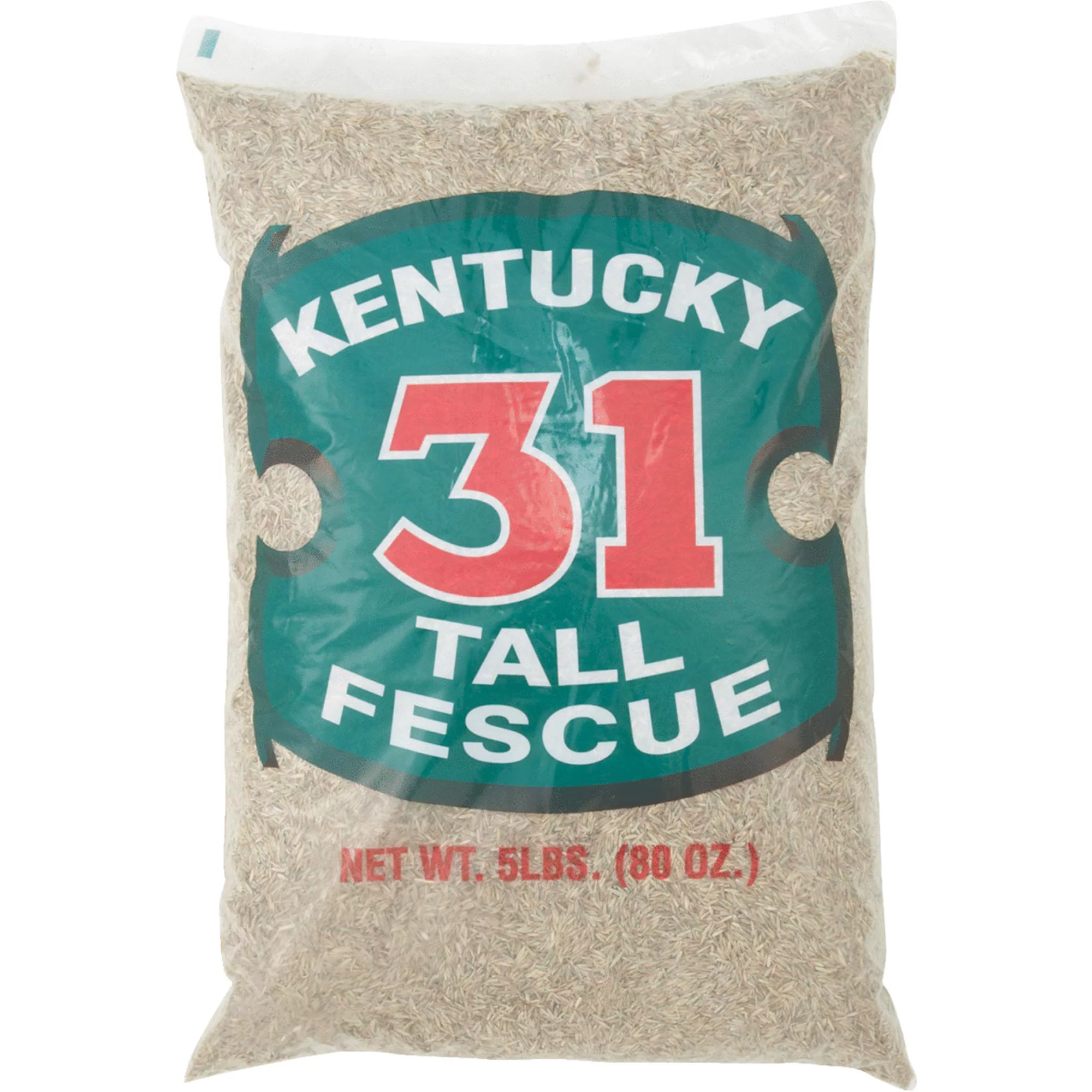Home>Gardening & Outdoor>Landscaping Ideas>How To Water Fescue Grass


Landscaping Ideas
How To Water Fescue Grass
Modified: February 18, 2024
Learn the best watering techniques for fescue grass in your landscaping. Get expert tips and ideas for maintaining a lush, green lawn.
(Many of the links in this article redirect to a specific reviewed product. Your purchase of these products through affiliate links helps to generate commission for Storables.com, at no extra cost. Learn more)
Introduction
Read more: How To Get Rid Of Fescue Grass
Understanding Fescue Grass
Fescue grass is a popular choice for lawns due to its adaptability and low maintenance requirements. It is known for its fine texture, vibrant green color, and ability to thrive in a variety of conditions. Understanding the unique characteristics of fescue grass is essential for effectively caring for it, and proper watering is a crucial component of its maintenance.
Key Takeaways:
- Watering fescue grass is crucial for a vibrant lawn. Deep watering, early morning sessions, and adjusting for drought help promote healthy growth and reduce water waste.
- Understanding fescue grass’s needs, like soil type and moisture levels, empowers you to nurture a lush lawn while conserving water and supporting the environment.
Watering Fescue Grass
Watering fescue grass may seem straightforward, but there are nuances to consider to ensure optimal health and appearance. By implementing best practices for watering, you can promote lush growth and resilience in your fescue lawn, contributing to a vibrant and inviting outdoor space.
In the following sections, we will delve into the specifics of fescue grass and explore the most effective strategies for watering this resilient and visually appealing grass variety. Understanding the intricacies of fescue grass and its watering requirements will empower you to nurture a stunning lawn that enhances the beauty of your outdoor environment.
Read more: How To Get Rid Of Fescue Grass
Understanding Fescue Grass
Fescue grass, a cool-season grass variety, is widely recognized for its adaptability and resilience in various climates. There are several types of fescue grass, including tall fescue, fine fescue, and creeping red fescue, each with its unique characteristics and suitability for different environments.
Tall fescue, known for its deep roots and drought tolerance, is often used in lawns, parks, and athletic fields. Fine fescue, which includes varieties such as creeping red fescue, chewings fescue, hard fescue, and sheep fescue, boasts a fine texture and shade tolerance, making it an excellent choice for areas with limited sunlight.
Creeping red fescue, as the name suggests, has a creeping growth habit and excels in cool, shaded regions. These distinctions highlight the versatility of fescue grass and its potential to thrive in diverse settings.
One of the key attributes of fescue grass is its ability to withstand dry conditions, making it a low-maintenance option for homeowners and landscapers. Its deep root system enables it to access water stored in the soil, reducing the reliance on frequent watering. Additionally, fescue grass exhibits remarkable heat tolerance, allowing it to maintain its lush appearance during the warmer months.
Furthermore, fescue grass is known for its rich green color, adding vibrancy to landscapes and serving as an attractive backdrop for outdoor activities. Its fine blades create a velvety texture that enhances the visual appeal of lawns and green spaces.
Understanding the unique traits of fescue grass is essential for tailoring care practices to meet its specific needs. By recognizing its adaptability, drought resistance, and aesthetic qualities, individuals can make informed decisions regarding lawn maintenance and watering routines, ultimately contributing to the long-term health and beauty of their outdoor spaces.
Key Takeaways:
- Watering fescue grass is crucial for a vibrant lawn. Deep watering, early morning sessions, and adjusting for drought help promote healthy growth and reduce water waste.
- Understanding fescue grass’s needs, like soil type and moisture levels, empowers you to nurture a lush lawn while conserving water and supporting the environment.
Watering Fescue Grass
When it comes to watering fescue grass, a balanced approach is crucial to promote healthy growth and vitality. While fescue grass exhibits drought tolerance, adequate hydration is essential, especially during periods of limited rainfall or high temperatures. Understanding the factors that influence fescue grass’s watering needs is instrumental in maintaining a lush and resilient lawn.
One of the primary considerations when watering fescue grass is the soil type. Well-draining soil is optimal for fescue grass, as it prevents waterlogging and root suffocation. If the soil retains water excessively, it can lead to root rot and other detrimental conditions. Conversely, excessively sandy soil may struggle to retain moisture, necessitating more frequent watering to sustain the grass.
Another essential factor to consider is the time of day for watering. Watering fescue grass in the early morning allows for optimal absorption and minimizes the risk of fungal diseases, as the grass blades can dry before evening. Conversely, watering during the hottest part of the day can result in excessive evaporation, reducing the effectiveness of hydration and potentially stressing the grass.
It is also important to be mindful of the frequency and duration of watering. Deep, infrequent watering sessions are preferable to frequent, shallow watering, as they encourage the development of robust root systems that can access moisture stored deeper in the soil. This approach fosters resilience and reduces the grass’s dependency on frequent watering, promoting overall sustainability.
During periods of drought or heat stress, adjusting the watering frequency can help sustain the grass’s health. Observing the grass for signs of dehydration, such as wilting or a bluish tint, can guide adjustments to the watering regimen, ensuring that the grass remains vibrant and vigorous.
By understanding the nuances of watering fescue grass and tailoring irrigation practices to suit its specific requirements, individuals can support the grass’s well-being and maintain an aesthetically pleasing lawn. The next section will delve into best practices for watering fescue grass, providing actionable insights for nurturing vibrant and resilient fescue lawns.
Water fescue grass deeply and infrequently, giving it about 1-1.5 inches of water per week. Water in the morning to reduce evaporation and prevent disease.
Read more: How To Plant Fescue Grass Seed
Best Practices for Watering
Implementing best practices for watering is essential to ensure the health and vibrancy of fescue grass. By incorporating these strategies into your lawn care routine, you can promote robust growth and resilience, ultimately enhancing the beauty of your outdoor space.
1. Deep Watering: When watering fescue grass, aim for deep penetration to encourage the development of strong, deep roots. This can be achieved by watering for longer durations, allowing the moisture to reach the lower layers of the soil. Deep watering promotes drought resistance and reduces the frequency of watering sessions.
2. Early Morning Watering: Schedule watering sessions for the early morning to optimize absorption and minimize the risk of fungal diseases. Watering at this time allows the grass blades to dry before evening, reducing the likelihood of moisture-related issues.
3. Monitoring Soil Moisture: Regularly assess the moisture levels in the soil to determine when watering is necessary. This can be done by inserting a screwdriver or soil moisture meter into the ground to gauge the depth of moisture penetration. Adjust watering frequency based on the soil’s moisture retention capacity.
4. Drought Response: During periods of drought or heat stress, adjust the watering frequency to provide additional hydration to the grass. Observing the grass for signs of dehydration, such as wilting or a bluish tint, can guide adjustments to the watering regimen, ensuring that the grass remains healthy and vibrant.
5. Avoiding Runoff: To maximize the effectiveness of watering sessions, monitor the absorption rate of the soil and adjust the watering duration to prevent runoff. This ensures that the grass receives adequate moisture without wastage, contributing to water conservation and efficient lawn maintenance.
6. Mulching: Applying a layer of organic mulch around the base of fescue grass can help retain soil moisture, reducing the frequency of watering while providing essential nutrients to the grass. Mulching also contributes to weed suppression and soil insulation, creating a conducive environment for healthy grass growth.
By embracing these best practices for watering fescue grass, you can nurture a lush and resilient lawn that enriches your outdoor environment. Thoughtful and strategic watering not only supports the health of the grass but also contributes to water conservation and sustainable landscaping practices.
Conclusion
In conclusion, watering fescue grass is a fundamental aspect of its care and maintenance, playing a pivotal role in nurturing a vibrant and resilient lawn. Understanding the unique characteristics of fescue grass, including its adaptability, drought tolerance, and aesthetic appeal, provides valuable insights for tailoring effective watering practices.
By recognizing the importance of soil type, watering timing, and frequency, individuals can optimize hydration for fescue grass, promoting robust root development and sustainable growth. Implementing best practices such as deep watering, early morning irrigation, and drought-responsive adjustments empowers individuals to cultivate thriving fescue lawns that enhance their outdoor spaces.
Furthermore, incorporating mulching as a moisture retention strategy and monitoring soil moisture levels contributes to efficient water usage and environmental sustainability. These conscientious approaches to watering not only benefit the health and appearance of fescue grass but also align with responsible landscape management principles.
Ultimately, the careful attention to watering fescue grass reflects a commitment to preserving the natural beauty of outdoor environments while promoting the long-term well-being of the grass and surrounding ecosystems. By embracing these principles and practices, individuals can foster lush, inviting lawns that serve as enjoyable outdoor retreats and contribute to the overall allure of their properties.
In essence, watering fescue grass is not merely a routine task but a mindful and purposeful endeavor that harmonizes with the resilience and beauty of this versatile grass variety. By nurturing fescue lawns with strategic and informed watering practices, individuals can cultivate enduring natural landscapes that enrich their lives and those of their communities.
Frequently Asked Questions about How To Water Fescue Grass
Was this page helpful?
At Storables.com, we guarantee accurate and reliable information. Our content, validated by Expert Board Contributors, is crafted following stringent Editorial Policies. We're committed to providing you with well-researched, expert-backed insights for all your informational needs.















0 thoughts on “How To Water Fescue Grass”